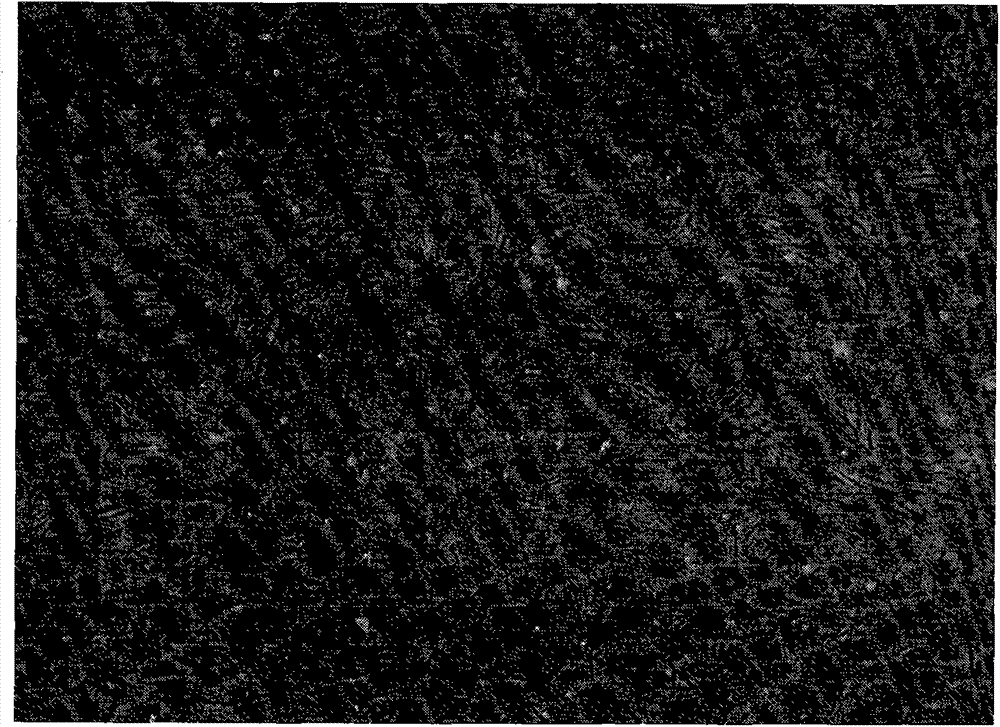A method for isolating and culturing human olfactory mucosa mesenchymal stem cells
A technology for the isolation and culture of mesenchymal stem cells, which is applied in the field of isolation and culture of human olfactory mucosa mesenchymal stem cells, which can solve the problems of limited acquisition, decreased quantity and proliferation and differentiation potential, and high virus infection rate
- Summary
- Abstract
- Description
- Claims
- Application Information
AI Technical Summary
Problems solved by technology
Method used
Image
Examples
Embodiment 1
[0035] Two pieces of olfactory mucosal tissue (size 2×3mm) were obtained, and washed three times with 1% penicillin repeatedly under aseptic conditions to remove residual blood. Cut it to a length of approximately 1 mm with sterile ophthalmic scissors in complete medium 3 The tissue block was placed in a 15ml centrifuge tube, mixed with complete medium and shaken, evenly planted in a cell culture dish, and placed in a 37°C, 5% CO2 incubator. On the 7th day of culture, the cells climbed out and observed adherent spindle-shaped or polygonal cells under the microscope, and then the medium was replaced every 3 days. On the 15th day of culture, the cells were about 80% confluent, and the cells were passaged at a ratio of 1:3, and then every 1.5-2 days, and sufficient mesenchymal stem cells were finally obtained.
Embodiment 2
[0037] Three pieces of olfactory mucosa tissue (size 2×2mm) were obtained, and washed repeatedly with 1% penicillin under aseptic conditions to remove residual blood. Cut it to a length of approximately 1 mm with sterile ophthalmic scissors in complete medium 3 The tissue block was placed in a 15ml centrifuge tube, mixed with complete medium and shaken, evenly planted in a cell culture dish, and placed in a 37°C, 5% CO2 incubator. On the 8th day of culture, adherent spindle-shaped or polygonal cells were observed under the microscope, and the medium was replaced every 3 days thereafter. On the 14th day of culture, the cells were about 80% confluent, and they were subcultured at a ratio of 1:3, and thereafter every three days to obtain sufficient mesenchymal stem cells.
Embodiment 3
[0039] Two pieces of olfactory mucosal tissue (size 2×2mm) were obtained, and washed repeatedly with 1% penicillin under sterile conditions to remove residual blood. Cut it to a length of approximately 1 mm with sterile ophthalmic scissors in complete medium 3 The tissue block was placed in a 15ml centrifuge tube, mixed with complete medium and shaken, evenly planted in a cell culture dish, and placed in a 37°C, 5% CO2 incubator. On the 6th day of culture, adherent spindle-shaped or polygonal cells were observed under the microscope, and the medium was replaced every 3 days thereafter. On the 14th day of culture, the cells were about 80% confluent, and they were subcultured at a ratio of 1:3, and thereafter every three days to obtain sufficient mesenchymal stem cells.
[0040] The cultured olfactory mucosal mesenchymal stem cells were subjected to microscopic examination, flow cytometry to detect characteristic surface markers, osteogenesis and adipogenic induction and staini...
PUM
 Login to View More
Login to View More Abstract
Description
Claims
Application Information
 Login to View More
Login to View More - R&D
- Intellectual Property
- Life Sciences
- Materials
- Tech Scout
- Unparalleled Data Quality
- Higher Quality Content
- 60% Fewer Hallucinations
Browse by: Latest US Patents, China's latest patents, Technical Efficacy Thesaurus, Application Domain, Technology Topic, Popular Technical Reports.
© 2025 PatSnap. All rights reserved.Legal|Privacy policy|Modern Slavery Act Transparency Statement|Sitemap|About US| Contact US: help@patsnap.com



